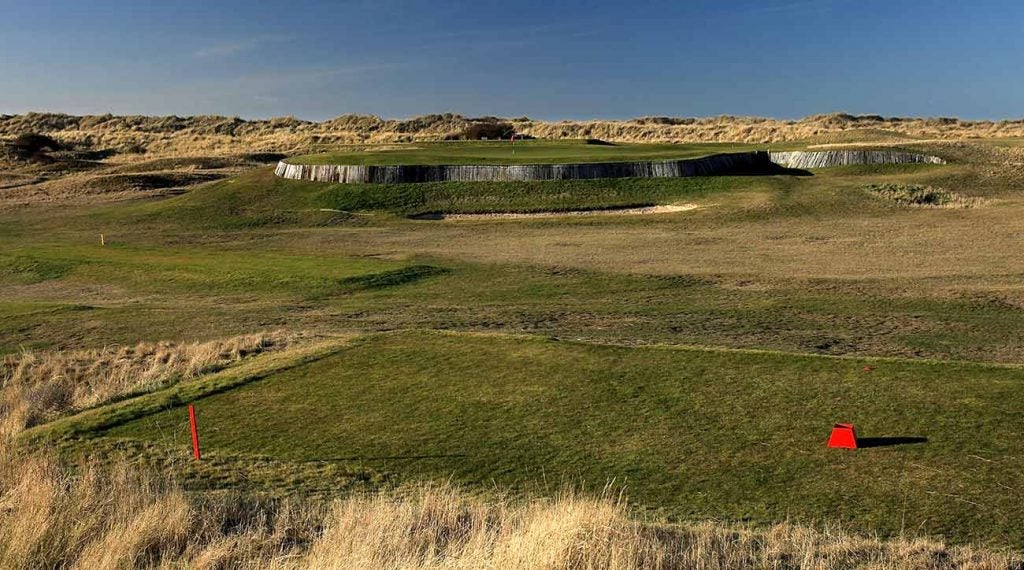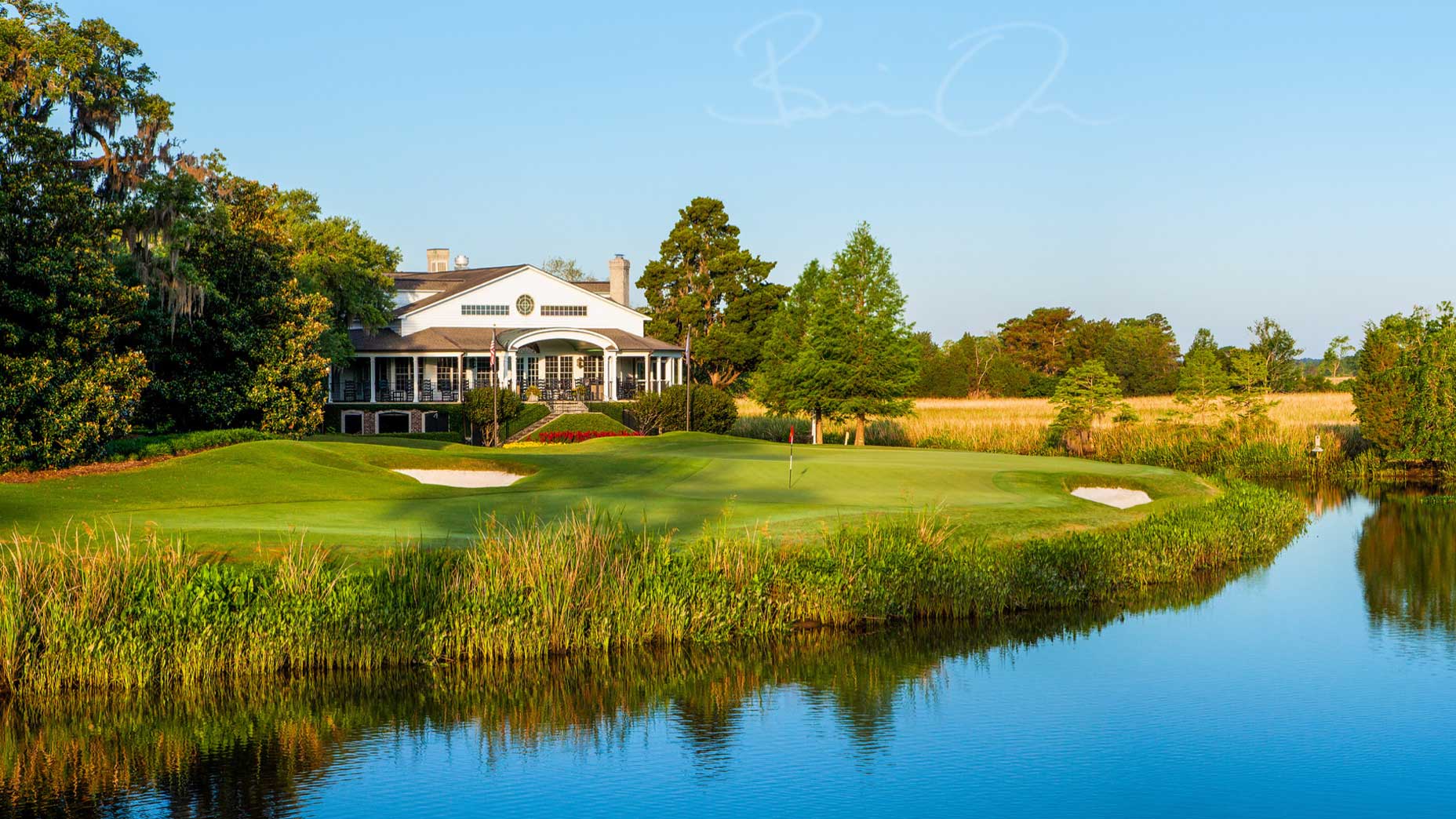 This war-weary nation’s only golf course is short on yards — but long on charm
This war-weary nation’s only golf course is short on yards — but long on charm
What is a ‘Short’ hole, plus how identifying one can help your game
Welcome to A Beginner’s Guide to Golf Course Design, where we dig into the history, design and meaning of golf course architecture terms you’ve probably heard before but might not fully understand. We’ll explain all of the above in an accessible Q&A format, and better yet, teach you how to identify these features and plan your attack for the next time you see one, saving you strokes along the way. In this installment, we’re breaking down a Short hole.
Do I really need this one explained to me? It’s just a hole that’s … short, right?
For the most part, yes, you’re right. A Short is a template hole and almost always the shortest hole on the course, putting a wedge or shorter iron in your hand. But there’s more to it than that. Architects aren’t just giving you a reprieve when they put a Short in front of you, they are specifically testing different parts of your game.
But doesn’t short mean easy?
If you’re precise with your short irons, maybe. But Short template holes have their own challenges. Traditionally these holes have large greens with significant undulations. An inaccurate shot may still put you on the green, but will leave you with a long and difficult putt. Even short putts can be difficult if left in a problematic position or above the hole.

What makes a Short template hole different from just a regular par-3 that is short in length?
A common feature on a traditional Short template is a large indentation, “thumbprint” or “horseshoe” in the green. These undulations make for fun, difficult putts if you miss on the wrong side of a ridge, or even possibly two ridges away. The other common feature is heavy bunkering around the green, many of which are completely surrounded by bunkers to give the hole an island green look. If you’re going to miss a large green with a short iron, then you are going to be punished for it.
A Short hole can be thrilling for a lot of reasons, but what makes it great is that you can see all of it. The green is right there for the taking — the hole feels so close. (You’d kill for an approach this short on any other hole.) The added pressure surely leads to many bad misses, and the heavy bunkering around the green makes for a difficult up and down. What appears to be a good chance at birdie from the tee can quickly turn into disaster. That’s the brilliance of the design. Sometimes giving players exactly what they’ve been yearning for is the perfect strategy to make them choke.
While Shorts are not without strategy (placing your ball in the right portion of the green is important), they also fall under the heroic school of golf course architecture. There is less strategy here. You see the green and hole, and now you have to hit the shot to a dramatic green.
ADVERTISEMENT
OK, so where’s the original Short hole?
The original Short hole is the current 4th at Royal West Norfolk Golf Club in Brancaster, England, designed by Holcombe Ingleby. Like the rest of the template designs, C.B Macdonald brought the strategy to America with him and designed many of the best in the world along with Seth Raynor. Though, like many of the templates, the best architects learned from the masters and found their own spins on these classics.
Is there a strategy for these holes for the next time I run into one?
Every Short is different, but there are some things to keep in mind when you step to the tee. The heavy bunkering surrounding most of the greens combined with the difficult undulations makes getting up and down exceedingly difficult. If there is a tricky pin, the better miss is likely to the middle of the green and taking your chances with your putter. Understanding the undulations of the green and where to leave the ball can be helpful as well. A slightly longer uphill putt from the correct angle may be a better chance at birdie or par than a shorter, sweeping downhiller. It might not always be in your best interest to take direct aim at the hole and fire.
The biggest challenge of a Short template is mental. It can be easy to let up focus, to think this hole is a gift, a moment to relax. But there isn’t a particularly good spot to miss here, so you need to focus and hit it where you’re aiming. You have a short iron in hand, you can pull this off… right?
Do the pros play any Short holes?
There’s really only one classic Short on the PGA Tour, which is the finishing hole at TPC Old White at A Military Tribute at the Greenbriar, designed by Macdonald. It’s rare for courses to end on a par-3, but the drama of this one is a great way to end the tournament each year.
Where else are some cool ones?
Glad you asked. Here are a few:
The 16th at Sleepy Hollow Country Club
Maybe the most photographed hole in recent years, and it’s no wonder why. The 16th at Sleepy Hollow has a large green with a definitive thumbprint added by Gil Hanse during some restoration work. It is surrounded with a deep bunker, and the downhill shot with the view of the water in the background makes this one of the most memorable holes in all of golf.

The 16th at The Donald Ross Course at French Lick
If you ever find yourself in the birthplace of Larry Bird, The Donald Ross course at the French Lick Resort is certainly worth a stop. Though not a traditional Macdonald/Raynor Short, the 16th at French Lick uses the same strategy. The shortest hole on the course by a large margin, this par-3 has a difficult green and heavy bunkering, including some iconic Ross double-bunkering in the back.
The 6th at the National Golf Links of America
It is no surprise that at Macdonald’s masterpiece sits another astounding template hole. The 6th measures only 123 yards but has one of the largest greens on the course. The green and its many contours feed balls away from the middle and off the green in many spots. Like most Shorts, this one is heavily bunkered to punish any miss.
The 10th at Chicago Golf Club
One of Macdonald’s first Shorts, the 10th at Chicago Golf Club is surrounded by bunkers, and the heavily undulating green has two thumbprints. The hole is only 140 yards, but if you don’t find the right section of the green — or even the correct thumbprint — a par is no guarantee.
The 5th at Old Macdonald at Bandon Dunes
At Old Macdonald, Tom Doak cited Chicago Golf’s 10th, National Golf Links of America’s 6th and West Norfolk’s 4th as precedents for his Short hole. This one again features one of the largest greens on the course, though its undulations split it into different sections.
To receive GOLF’s all-new newsletters, subscribe for free here.
ADVERTISEMENT






